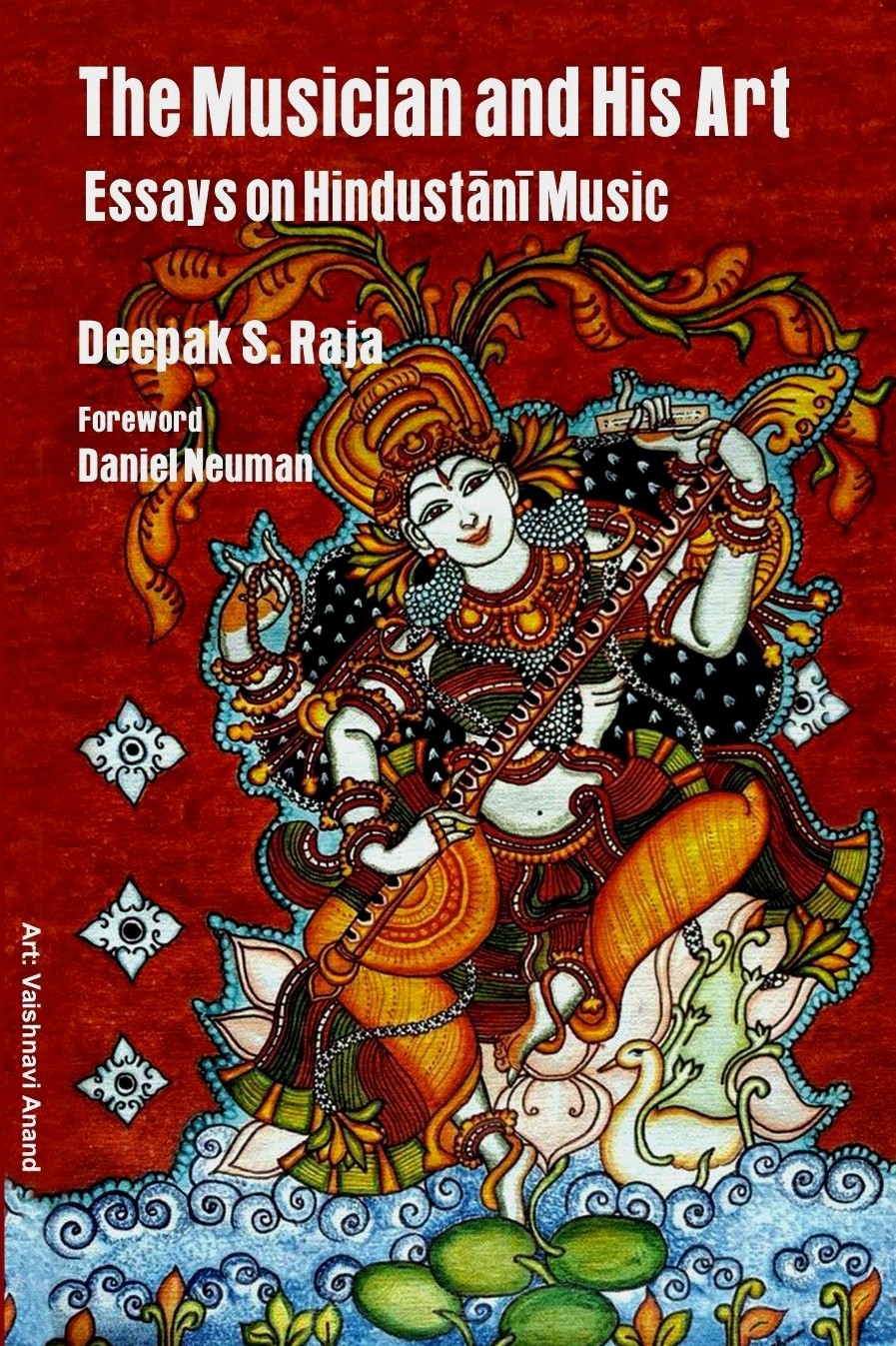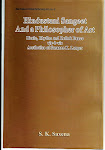Jog is an immensely popular and versatile post-sunset raga in contemporary music.. The raga now enjoys considerable popularity also in the semi-classical and light genres. The raga did not merit elaborate discussion in major early 20th century works such as Bhatkhande Sangeet Shastra. It can be assumed, therefore, to have acquired its significance in the latter half of the last century. The raga bears a close resemblance to raga Nat of the Carnatic [South Indian] tradition.
According to Manikbuwa Thakurdas, [Raga Darshan, Vol II, 1st Edition, Krishna Bros. Ajmer, 1988], two variants of the raga are in circulation. The variant with an affinity to raga Dhani utilizes only the komal [flat] Ni, while the variant with a Tilang affinity utilizes both, the komal as well as the shuddha [natural] Ni swaras. The latter version was performed commonly well into the 1960s by even the leading musicians of the pre-independence generation. The problem with the Tilang-biased [twin-Ga and twin-Ni usage] was that the Tilang facet tended to dominate the aesthetic experience, and the resultant raga found it difficult to establish its distinctive melodic personality. In later years, therefore, the preference has stabilized around the Dhani-biased variant with only a single [komal] Ni and twin-Ga usage. This is the raga currently recognized as Jog.
The raga belongs to the Khamaj parent scale of Hindustani music, and is hyper-pentatonic, omitting Re and Dh swaras in the ascent as well as descent. It deploys both Ga swaras -- the shuddha [natural] Ga in the ascent, and the komal [flat] Ga in the descent.
Ascent: S G M P n S’ Descent: S’ n P M g S
According to Subbarao [Subbarao, B. Raga Nidhi, Vol. II, 4th Edition, 1996, Music Academy, Madras], the Vadi and Samvadi swaras [primary and secondary dominants] of the raga are [shuddha] Ga and the higher-octave Sa respectively. According to Manikbuwa Thakurdas [Ibid], the Vadi-Samvadi are Pa and Sa. In contemporary practice, however, the treatment of the raga suggests [shuddha] Ga as the vadi and base-Sa as the samvadi. However, after the release of a Jog recording of the influential vocalist, Ustad Ameer Khan [STCS.04B.7374], Ma has also gained considerable significance in the raga, though not sufficient to replace Ga as the vadi.
In the phrasing pattern of Jog, phrases are permitted to terminate only on S, [shuddha] G, and P, two of the three being the vadi-samvadi pair. However, the contemporary Jog conforms to a general tendency amongst musicians to enlarge the melodic potential of pentatonic ragas by treating all the swaras as permissible terminal points in phrasing. A melodic focus on Ma became acceptable after Ustad Ameer Khan’s rendition of the raga. Musicians of later generations have now added [komal] Ni to the permissible terminal points for phrasing, thus effectively removing all constraints on phrasing, and allowing the tonal geometry of the raga to become the sole repository of its raga-ness.
The chalan [sekeletal phraseology] of the contemporary raga form is fairly straightforward, though biased in favour of exploiting the poignant interplay between the two Ga swaras in the purvanga [lower tetrachord], where the center of gravity of the raga lies.
Chalan: S n. g S/ n. P. n. g S/ n. S G/ S G G M/ G M g S/ S G M P/ M n P/ G M P n/ P n S’/ n P M G/ S G M g S or occasionally G M G g S.
The interplay of the two Ga swaras, along with the purvanga bias of the raga impart a degree of pathos to the raga, which remains the dominant aesthetic feature of the Jog experience at any tempo of rendition. This interplay follows definite rules of phrasing. As a rule, whenever a raga utilizes both the manifestations of a particular swara, the komal and the shuddha, one of them is used in the ascent and the other in the descent. With perhaps the sole exception of Lalit, which uses two Ma swaras, their consecutive deployment in the same direction is discouraged. However, the additional pathos released by such use has frequently tempted musicians to break this rule. As a result, Jog appears now to permit consecutive twin-Ga usage in the descent [M-G-g-S], although such usage is required to be judicious and occasional.
(c) India Archive Music Ltd., New York.
The finest recordings of Raga Jog have been produced by India Archive Music, New York. IndiaArcMu@aol.com.
According to Manikbuwa Thakurdas, [Raga Darshan, Vol II, 1st Edition, Krishna Bros. Ajmer, 1988], two variants of the raga are in circulation. The variant with an affinity to raga Dhani utilizes only the komal [flat] Ni, while the variant with a Tilang affinity utilizes both, the komal as well as the shuddha [natural] Ni swaras. The latter version was performed commonly well into the 1960s by even the leading musicians of the pre-independence generation. The problem with the Tilang-biased [twin-Ga and twin-Ni usage] was that the Tilang facet tended to dominate the aesthetic experience, and the resultant raga found it difficult to establish its distinctive melodic personality. In later years, therefore, the preference has stabilized around the Dhani-biased variant with only a single [komal] Ni and twin-Ga usage. This is the raga currently recognized as Jog.
The raga belongs to the Khamaj parent scale of Hindustani music, and is hyper-pentatonic, omitting Re and Dh swaras in the ascent as well as descent. It deploys both Ga swaras -- the shuddha [natural] Ga in the ascent, and the komal [flat] Ga in the descent.
Ascent: S G M P n S’ Descent: S’ n P M g S
According to Subbarao [Subbarao, B. Raga Nidhi, Vol. II, 4th Edition, 1996, Music Academy, Madras], the Vadi and Samvadi swaras [primary and secondary dominants] of the raga are [shuddha] Ga and the higher-octave Sa respectively. According to Manikbuwa Thakurdas [Ibid], the Vadi-Samvadi are Pa and Sa. In contemporary practice, however, the treatment of the raga suggests [shuddha] Ga as the vadi and base-Sa as the samvadi. However, after the release of a Jog recording of the influential vocalist, Ustad Ameer Khan [STCS.04B.7374], Ma has also gained considerable significance in the raga, though not sufficient to replace Ga as the vadi.
In the phrasing pattern of Jog, phrases are permitted to terminate only on S, [shuddha] G, and P, two of the three being the vadi-samvadi pair. However, the contemporary Jog conforms to a general tendency amongst musicians to enlarge the melodic potential of pentatonic ragas by treating all the swaras as permissible terminal points in phrasing. A melodic focus on Ma became acceptable after Ustad Ameer Khan’s rendition of the raga. Musicians of later generations have now added [komal] Ni to the permissible terminal points for phrasing, thus effectively removing all constraints on phrasing, and allowing the tonal geometry of the raga to become the sole repository of its raga-ness.
The chalan [sekeletal phraseology] of the contemporary raga form is fairly straightforward, though biased in favour of exploiting the poignant interplay between the two Ga swaras in the purvanga [lower tetrachord], where the center of gravity of the raga lies.
Chalan: S n. g S/ n. P. n. g S/ n. S G/ S G G M/ G M g S/ S G M P/ M n P/ G M P n/ P n S’/ n P M G/ S G M g S or occasionally G M G g S.
The interplay of the two Ga swaras, along with the purvanga bias of the raga impart a degree of pathos to the raga, which remains the dominant aesthetic feature of the Jog experience at any tempo of rendition. This interplay follows definite rules of phrasing. As a rule, whenever a raga utilizes both the manifestations of a particular swara, the komal and the shuddha, one of them is used in the ascent and the other in the descent. With perhaps the sole exception of Lalit, which uses two Ma swaras, their consecutive deployment in the same direction is discouraged. However, the additional pathos released by such use has frequently tempted musicians to break this rule. As a result, Jog appears now to permit consecutive twin-Ga usage in the descent [M-G-g-S], although such usage is required to be judicious and occasional.
(c) India Archive Music Ltd., New York.
The finest recordings of Raga Jog have been produced by India Archive Music, New York. IndiaArcMu@aol.com.






